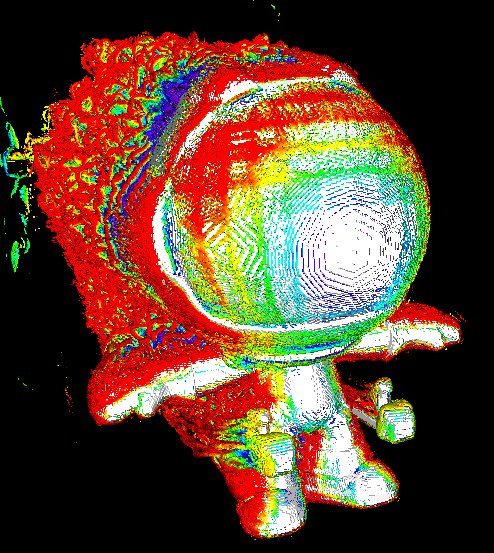Young lady, in this house, we obey the laws of thermodynamics!
Did you try flipping the magnet over? If you put the two north ends together they’ll repel instead of attract.
The beauty is that you can make the mental gymnastics to make it work both ways.
If they are opposite, the magnet attracts the car which moves the magnet away creating infinite motion
If they are the same, the magnet is repelled by the car, moving it away, moving the car forward creating infinite motion
You can even do mental tricks to make the contraption go backwards: Opposites: car attacks magnet which moves the car backwards Same: magnet reppels the car which moves the contraption backwards
By your though process shouldn’t the car be going backwards?
So mount it on the back and make yourself an old-fashioned rear engine car.
Except it won’t be moving without outside force? The magnets are not getting closer from the wheels spinning
I am aware of that, I was going along with the joke.
I tried something like that when I was about ten.
I still hold feelings against the force range being so short. Too close and the wire bends. Too far and there is barely any attraction…
Ugh, I just want to break physics, let me be.
Because you need to put it on the back and have it repel the truck forward instead of attract it forward obviously
The wire/metal holding it needs to be springy and bobbing back and forth to generate the momentum, duh… Half-assed implementation I say.
It would work if the repulsion/attraction only went in 1 direction. But since it goes both ways, they just cancel out.
Conversely, the fan version of this idea (fan blowing into a sail) does actually work. But it’s nowhere near as efficient as simply turning the fan away from the sail to push you the normal way.
Well because there the whole system now becomes the ship+air/water molecules rather than just the ship + you use energy to work the fan which imparts that energy to the air/water molecules. In the end the air/water molecules literally get pushed behind so the rest of the system can move forward.
What if u put the fan in the water?
There’s oxygen in water, so it could work
You think it would work if one end is a magnet and the other ferrous metal? I’m pretty certain it wouldn’t
Whatever happens there’s no work done as the magnet and it’s partner don’t move relative to each other. There’s force between them, but no movement.
You think it would work if one end is a magnet and the other ferrous metal?
No, because the force of attraction is still working in both directions just not as strongly as it would with two magnets.
Curse you physics
Yeah, as long as no other energy is put into the system, nothing will happen. Since the two parts are statically attached to the same object, so no additional movement or energy means no effect on the overall object.
It is basically like putting two nails in a piece of wood and stretching a rubber band between them. Nothing will happen without additional steps
Excellent! It is always nice to see people asking questions - the journey towards the answer should prove most enlightening! :-D
The magnet isn’t strong enough.
If you ever talk to someone confused by this, maybe ask them to lightly push the front magnet in the direction it’s trying to go.
I tried that, nothing happened to the picture. why???
Huh, try putting it next to the phone
“No srsly y isnt it?”
Why would it? Think about it, would the two magnet gets closer if the wheels started rolling?
Not with that attitude they won’t.
Need a bigger magnet.
Also, how do they work?
Real, totally heavily simplified answer. All atoms could be magnets, but most don’t have a force because the electron orbitals aren’t out enough. In fact just about everything can be explained by what the electron orbitals are doing. Even why the chair you’re sitting in feels solid. It’s the orbitals. See
and the deeper lesson on knowing the right questions to ask.
I love listening to Richard Feynman talk in those interviews
No, atoms with a symmetrical subatomic structure could never be magnets! And what would be the point of somehow enlarging the electrons orbit? You surely know a magnet needs a positive pole!
You are also definitely wrong about your third statement!You could never explain anything based on just the electron cloud, much less physics; a whole scientific field that generally works with the atomic core
Missed the first sentence I guess. It’s why I included the video for a much better, although also simplified and incomplete answer, and he says why.
What did you oversimplify to get there? And so you understand thats nonsense but have had commented it regardless? Hope everyone is at an situation where they can watch that vid of urs, everyone else because I am not
they come from the ground so they have gravity in them
Miracles
I am pretty sure the other guy is talking nonsense and he kinda didn’t explain anything, its basically an atom with such a subatomic structure where there are more electrons on one side than the other, making that side more negative! The whole deposit is made up of atoms facing the same way!
Oh boy, this is very incorrect, because it sounds like you are attempting to explain magnetism with electrostatic forces. Here is a basic model which separates the difference between the two:
-
Electrostatic forces are caused by the electric field. Something produces an electric field simply by having an unbalanced charge. Positive attracts negative, negative repels negative, positive repels positive.
-
Magnetic forces are caused by the magnetic field. Something produces a magnetic field by having an unbalanced charge AND is moving.
This is why when trying to explain how solid magnets work, we focus on the electrons because electrons are charged particles that are always moving. So they produce both an electric field (being charged) and a magnetic field (being a moving charged system).
Rhaedas is sorta correct. Any solid system has the capability of being a magnet, but this takes an incredible amount of physics work where iron is special. Iron’s electrons are able to easily maintain a synchronous orbit with each other which results in magnetic forces being observable at a macroscopic scale (seeing iron magnets pull on each other). In most other materials, the electrons orbits are chaotic, so even though magnetic fields are still being produced by their electrons, the lack of order results in no magnetic force being observable on the macroscopic scale; but if you place this non-iron material within a very strong magnetic field, you may be able to align their electrons orbits so that it becomes magnetic on the macroscopic scale (like iron).
Did you use ai to form that? No human has ever, ever written that magnetic force causes magnetic field; nor electrostatics force causes an electric field…
No, electrostatic fields is caused by stationary charges
I don’t dare imagine what you think an unbalanced charge is, but a moving electric charge is enough to cause a magnetic field.
‘It takes incredible amounts of physics work to get something’… You know, ai used to worry me quite a bit but comments like yours calm my soul! We are thankfully not there yet where it’s actually would be capable of replacing hack squat!
Lol you weren’t kidding… The full sentence is even weirder:
Any solid system has the capability of being a magnet, but this takes an incredible amount of physics work where iron is special.
I kind of hope a human didn’t write that…
Not AI. I’m in academia, so I write academically.
I specify “physics work” to mean physic’s definition of work (dot product between Force and Displacement).
And to not connect the importance between the electric and magnetic field as it pertains to the the electrostatic force and magnetic force reveals your basic understanding of the physics. Hence, why your prior comment was so problematic…
Oh academia! Of course you are! Kinda weird you didn’t specify your field and experience… Welp, must have had no space left for that in that reply of yours…
Kinda odd that an academic would continously write nonsense… Work in the contest of physics (what fucking other context would we use it when we are discussing physics…) is defined as: the energy transferred to or from an object by a force acting on it as it moves through a distance!Aka ‘W = F • s’, its not a dot product its multiplication dear doctor? Also makes absolutely no sense in the prev context you used it… If you just wanted to pick a word to insinuate a sort of insight, you should have used midi-chlorians! Sounds a lot cooler and makes just as much sense!
So far every single one of your statements had been wrong… I will have to ask you to stop sharing your brilliant insights to beget the spread of misinformation!
It’s very apparent that you are not a good faith discusser and your knowledge of physics is very low.
I’m checking out of this discussion
Could you check out from every physics&whatever else you pretend to be discussion? Again, you didn’t even know the formula of work despite totally being an academic…
It genuinely upsets me that people like yours vote equal mine… Hope you know you looked really dumb and desperate the whole time!
-
When I was a kid I came up with this design during a long road trip. I spent the whole time thinking I was some kind of genius, because how didn’t anyone else think of this before?
You can imagine my disappointment when I got home and created my prototype.
Needs more magnets and some springs.
Maybe it needs gas?
This works in Kerbal Space Program














